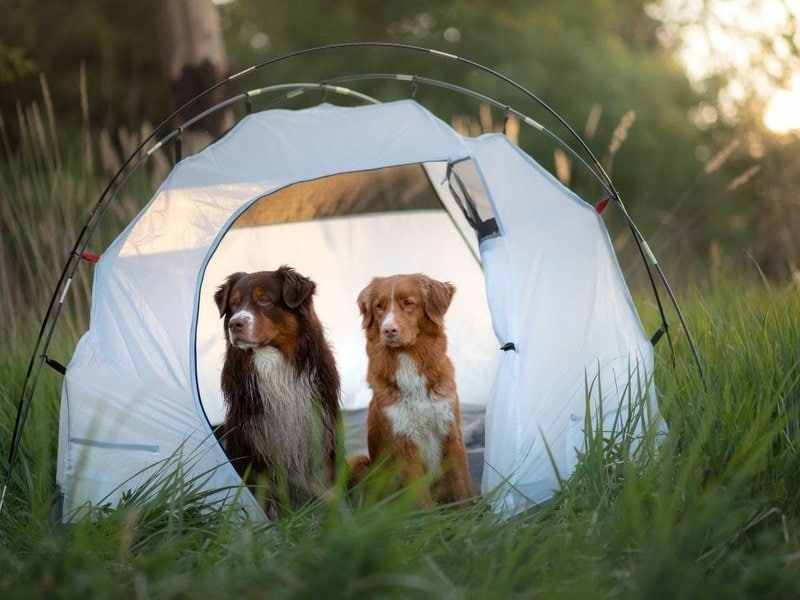Camping is a great way to bond with your dog and create memories that will last a lifetime. However, there are a few things you should take note of before heading out into the great outdoors with your furry friend.
You need to prepare your dogs for the camping trip as they are not used to staying outdoors. Make sure that their vaccines and other necessary medical treatments are all up-to-date. Choose the right tent or shelter for your dogs – one that has a well-ventilated space with good air circulation.
By being prepared, and following these tips, both you and your dog can have an enjoyable camping experience.
1. Find The Right Tent
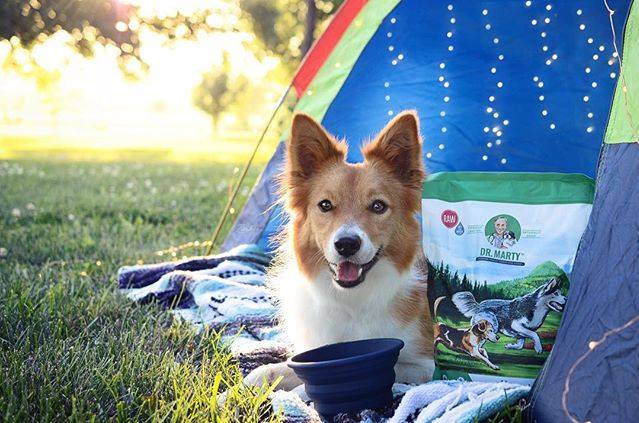
Tent camping with dogs can be tricky at the beginning. It’s worth spending a little extra to get a tent that will be truly comfortable for you and your dog.
First thing’s first: make sure to get a tent that’s big enough. Think of your dog like a person when selecting a tent size. For example, if you’re planning to camp with one other person and your dog, get a three-person tent.
Tents with vestibule entrances work great. This way, your dog is separated from you but can still see you through a mesh screen. Remember that your dog might feel anxious sleeping in an unfamiliar setting all alone and seeing you nearby will help calm them.
The vestibule feature also comes in handy if you want to leave your dog in the tent while preparing a campfire or food outside undisturbed. You can leave the entrance unzipped so your dog can see you outside through the mesh screen.
Other Tent Tips
Ventilation: Make sure to never leave your dog unattended in a tent without ventilation. If you must leave your dog unsupervised in the tent, unzip the screen to allow airflow in, and don’t be gone too long.
Damage: A dog’s toenails can scratch up or even tear your tent floor. Make sure to layer the floor of your tent with blankets to avoid this. It will also make the tent cozier for humans and pooches alike. Be sure to bring a dog bed for your pup to snooze on comfortably. You can even get a doggy sleeping bag!
Adjustment Period: While your dog might not be crazy about the idea of sleeping in a tent at first, especially if they’re not used to enclosed spaces, give them a chance to acclimate. Remember that you shouldn’t leave your dog outside on a leash overnight as wild animals might be hanging around.
Bring the crate: If your dog normally sleeps in a crate at home, bring the crate with you. Bringing it might be a slight inconvenience, but it will help maintain a sense of normalcy and routine for your pup.
2. Pick a Dog-Friendly Campsite
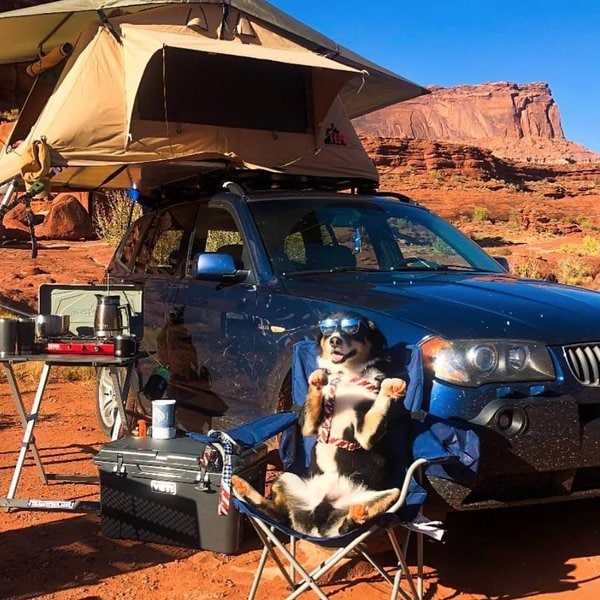
Before you head out, make sure to look up the rules and regulations for your chosen campsite. Not all locations allow dogs and most do have specific rules about pets.
Dog campsites may have rules allowing only a fixed number of pets allowed in a certain radius or some trails that are off-limits to pets. Doing your research beforehand is key.
3. Make Sure Your Dog Has ID
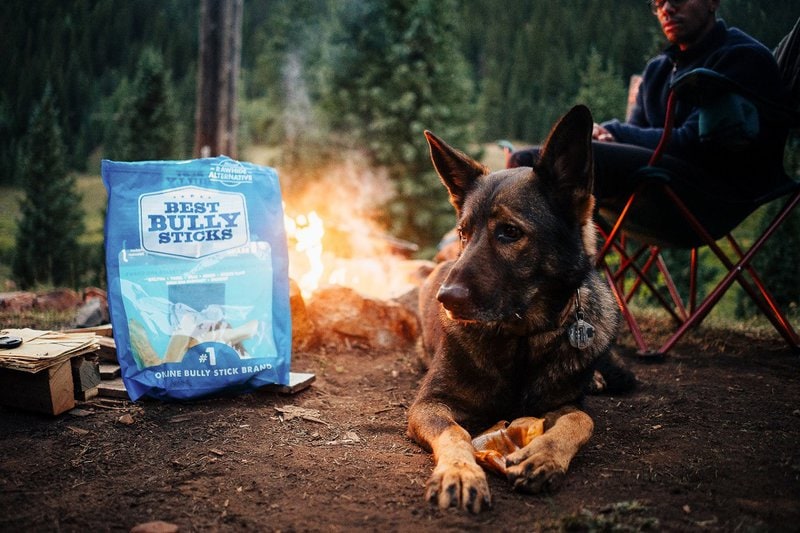
In addition to ensuring that your dog’s ID tag is up to date, you should also add a temporary tag that lists your campsite number and campground name. That way, if your dog goes wandering, someone can help them get back to you.
4. Pack With Your Pup In Mind
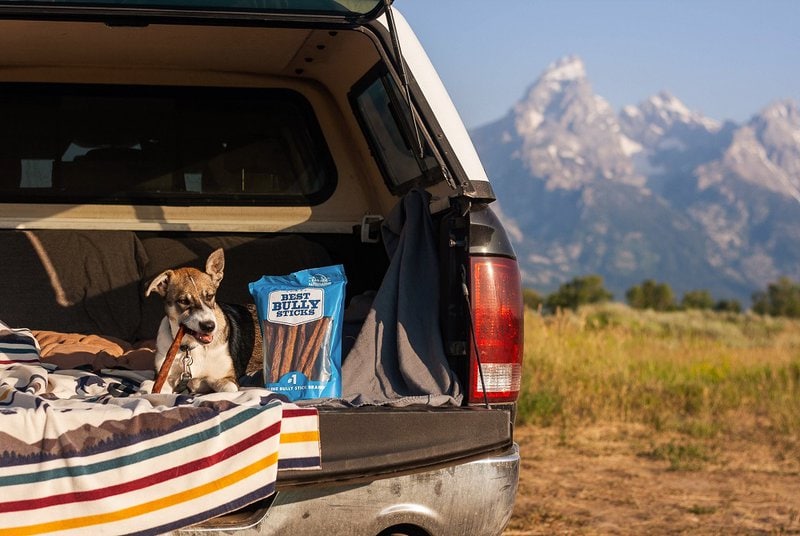
Unlike going to a hotel, where an extra toothbrush or razor is never far away, packing for camping requires more advanced planning. This is even more true when you bring along a furry friend.
Consider making a checklist of all the things you’ll need:
- Bring plenty of water. Consider how much both you and your dog will need each day. Depending on where you’re camping, there may not be a clean freshwater source to refill canteens. A collapsible bowl for your dog’s water is a great idea. They’re lightweight and easy to pack.
- Pack your dog’s favorite chew toys. They have something to do at the campsite. After all, this is your vacation, and you want to relax! Be sure you also have plenty of dog food and some treats for good behavior.
- Bring towels. You’ll want to bring extra towels for drying off your pup if they get wet or muddy and let’s face it, they will. Last but certainly not least, don’t forget waste removal bags to clean up after your pooch!
5. Follow Proper Pet Owner Etiquette
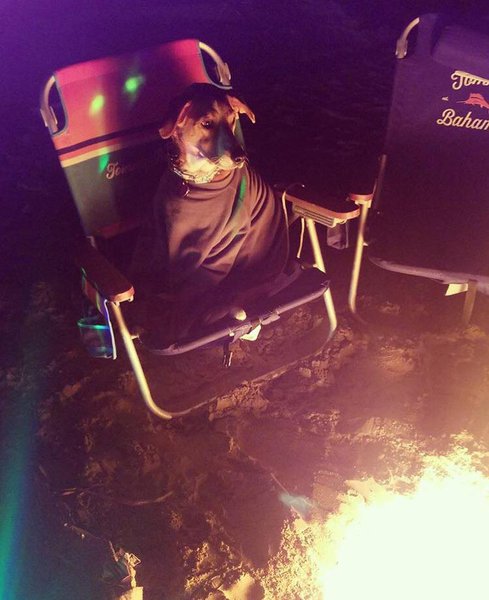
When you’re in a remote location, the temptation to let your dog wander free can be overwhelming. But you’d be wise to keep your dog on a leash. After all, hiking trails and campsites are shared spaces, and not all campers enjoy a dog bounding up to them.
Keeping your dog on a leash is required at most campsites and trails. Not only is it respectful of other campers, but it also keeps your pet safe. The risk of your dog getting lost or running into wildlife such as bears is too great in unknown territory.
Light-up LED collars and LED leashes are a good idea if you are concerned about losing sight of your dog in the woods.
If you’re relaxing at your campsite, give yourself and your dog a break from the leash with a stake and tie-out leash. Your dog will have more room to roam while still staying in your sight.
Be sure to always clean up after your dog. Just because you’re out in nature doesn’t mean you can shirk your pet owner’s responsibilities!
6. Consider First Aid
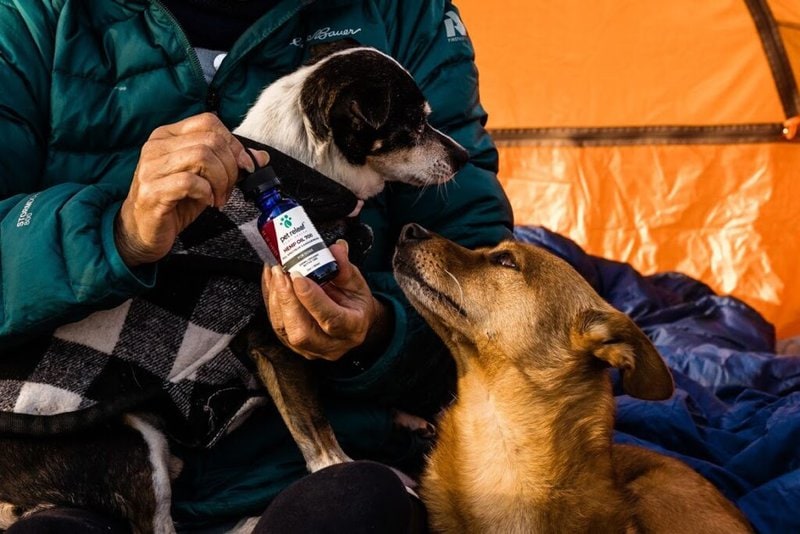
Chances are you already pack a first aid kit when you go camping, but did you know you can also buy a pet first aid kit? It’s important to consider the unfortunate possibility of your pet getting injured while camping.
Make sure you have the following:
- Antiseptic wipes and gauze to treat wounds
- Tweezers
- Saline eyewash in case your dog gets something in their eyes
Other Items To Consider
Booties: As much as dogs love to run and play outside, it can do a number on their paws. If you’re expecting to be on rough terrain, snow, or rocks that are very hot from the sun, consider getting booties for your dog. They may be resistant to wearing them at first, but it will protect their paws. You can also try a wax paw protector if your dog doesn’t keep booties on.
Insect Repellant/Creams: It’s extremely important to be mindful of ticks and other pests. Purchase a flea and tick preventative cream to apply to your dog. Make sure to check their fur for ticks at least once a day. A tick removal tool can be used to remove any you find.
Pre-Camping Vet Visit: It’s a good idea to visit your veterinarian before embarking on your trip. Make sure that your dog’s vaccinations are all up to date, particularly those that prevent ticks and fleas. Double-check that their microchip information is current.
7. Know Your Dog
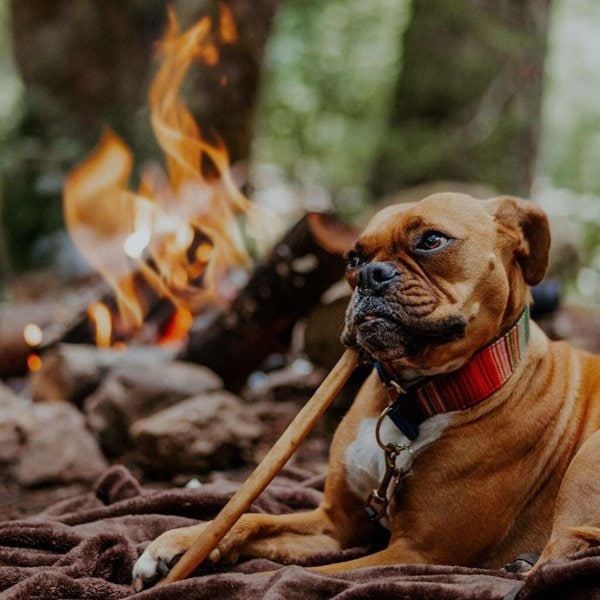
Not all dogs are equally adventurous. Some breeds are athletic and fearless and are keen to bound up the side of a mountain or swim in a lake. Others are happier just laying poolside or snoozing on your lap.
If you’re someone who camps and takes ambitious hikes regularly, you might want to consider getting a dog that fits your lifestyle. Some of the best camping dogs are bigger, more agile breeds, such as:
- German Shepherd
- Labrador Retriever
- Siberian Husky
There are other factors besides just breed that affect a dog’s camping prowess:
- Age
- Health conditions
- Temperament
Take your pup’s personality and limitations into consideration before heading out. Some dogs are just not suited for camping, and you’ll save yourself the misery by accepting this ahead of time.
Other Tips To Consider
Pick a campsite or a trail that aligns with your dog’s personality and ability level. If you have a young, healthy, spry black lab, you might be ready for something ambitious. If you have a Chihuahua, you might be walking a short trail close to home.
No matter what kind of dog you have, start out easy if it’s their first camping trip. Maybe do an overnight rather than a long weekend and pick easier hiking trails. It’s better to ease your pup into the world of camping than to give them a bad first experience.
Be honest with yourself about your pup’s capabilities. If you have a very young puppy who still barks at every passing stranger and bites at the leash, they may not be ready for a big trip. You can always wait a few months until your dog is a little older and better trained.
Conclusion
Dog-friendly camping is completely possible with a little advanced planning. With the right gear and the right campsite, you’ll ensure that both you and your pup feel comfortable.
Once your furry friend has adapted to the wonderful world of camping, you’ll have countless future adventures to look forward to.
About Illumiseen
Illumiseen.com is both a pet blog and shop; they mainly focus on dogs and horses. Their blog contains useful and informative topics on pet health, lifestyle, grooming, wellness, and so much more. Illumiseen offers innovative and high-quality LED accessories for people, dogs, and horses. Their products are designed with one goal in mind: to save lives.

